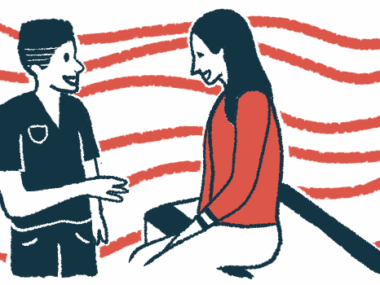Lack of symptoms in people 65 and older may delay Cushing’s diagnosis
Typical symptoms often prompt clinicians to run diagnostic tests
Written by |

Elderly people with Cushing’s syndrome often experience different symptoms than their younger counterparts, which suggests diagnosis may be more difficult with age, according to a recent study.
“Several typical symptoms of [Cushing’s] were less frequent in the older patients as compared with the younger, including weight gain, skin alterations, hair loss, hirsutism [dark, coarse body hair], low libido and depression,” researchers wrote.
“Our data emphasize the need of maintaining a high clinical suspicion of [Cushing’s syndrome] in the general population, while taking into account specific age-related differences in the presentation of symptoms,” they added.
The study, “Cushing’s Syndrome in the Elderly: Data from the European Registry on Cushing’s Syndrome,” was published in the European Journal of Endocrinology.
Analysis included data on 1,791 patients, mostly female and younger than 65
Cushing’s syndrome is characterized by high levels of the stress hormone cortisol. Cushing’s disease is a specific form of the syndrome where high cortisol levels are driven by a tumor in the brain’s pituitary gland.
In this study, an international team of scientists analyzed data from the European Registry on Cushing’s Syndrome, the largest database on Cushing’s, to examine how age affects clinical characteristics and treatment approaches.
The analysis included data on 1,791 patients. From these, about two-thirds had pituitary-dependent Cushing’s (i.e., Cushing’s disease).
Patients had a mean age of 44.7 years, and 78% were female. A total of 175 (9.8%) were considered elderly, meaning they were 65 or older. The researchers conducted a battery of statistical analyses to compare these elderly patients against those younger than 65, who made up 90.2% of the total study population.
Results showed that, while both groups consisted mostly of female patients, the proportion of females was lower among the elderly compared with the younger patients (61.1% vs. 79.7%). Among elderly patients, blood pressure measures tended to be higher for women, and men were more likely to report loss of libido as a disease symptom.
Elderly patients tended to have a lower body mass index (a measure of body fat) and waist circumference than their younger peers. While nearly three-quarters (73.2%) of young patients reported weight gain as a Cushing’s symptom, weight gain was reported by about half (49.7%) of elderly patients.
Older patients also reported lower rates of depression (20% vs. 33.3%) and loss of libido (8% vs. 20.1%), and they were less likely to have skin symptoms (58.8% vs. 69.4%). Among female patients, those in the elderly group experienced lower rates of hair loss (21% vs. 27%) and dark body hair growth, a condition known as hirsutism (22% vs. 52%).
Muscle weakness was more common among elderly patients, and a higher proportion of patients in the elderly group had high blood pressure (89.1% vs. 67.1%) or diabetes (48% vs. 27.6%). Elderly patients more often experienced bone fractures (21.7% vs. 13.4%), and rates of heart disease were significantly higher among elderly patients with Cushing’s disease (23% vs. 2%).
Several typical symptoms of [Cushing’s] were less frequent in the older patients as compared with the younger, including weight gain, skin alterations, hair loss, hirsutism [dark, coarse body hair], low libido and depression.
Older patients often don’t have symptoms that act as a “red flag” for clinicians
In measures of life quality, elderly patients tended to score worse on assessments related to mobility and self-care, but younger patients tended to score worse on measures of anxiety and depression.
These patterns were generally consistent in subsequent analyses that focused only on the subset of patients with pituitary Cushing’s. Overall, the researchers noted that elderly patients often don’t experience symptoms that act as a “red flag” for clinicians to run diagnostic tests for potential Cushing’s.
“Even the appearance of less specific symptoms of [Cushing’s], such as weight gain, was not as frequent in the older as it was in the younger, further contributing to reduce the probability that an aged patient seeks medical advice to treat or prevent them,” the team wrote.
Analyses of care patterns showed that tests measuring the levels of cortisol in urine were used less frequently to support the diagnosis of Cushing’s disease in elderly patients than in younger patients (87% vs. 95%).
Moreover, significantly fewer patients in the elderly group achieved disease remission after treatment (52% vs. 65%).
Older Cushing’s disease patients were also less likely than younger patients to undergo surgery on the pituitary gland as a first-line treatment (68.9% vs. 89.3%), whereas they were more likely to have radiation therapy as first-line treatment (35.3% vs. 6.6%).
“Although the surgical resection of the [disease-driving tumor] remains the first-line treatment of [Cushing’s disease], elderly patients were treated in a more conservative manner, undergoing surgery less frequently than the younger whereas receiving more cortisol-lowering drugs and radiotherapy as first line treatments,” the researchers wrote.
“Future studies are needed to evaluate the long-term effects of each treatment in the elderly, and establish the safest strategy within an individualized approach,” they wrote.





